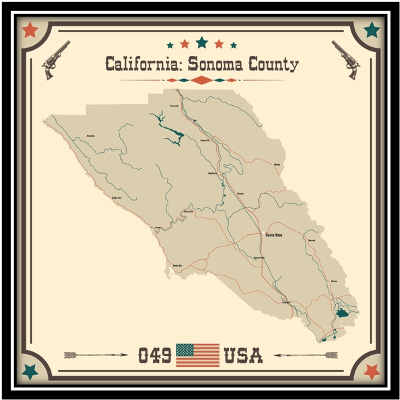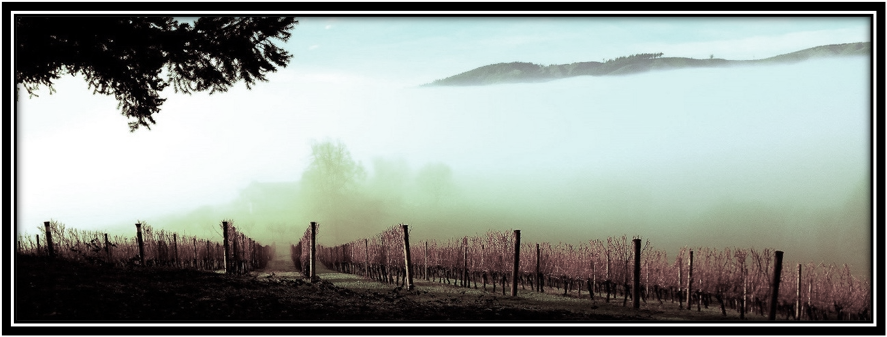REGULAR HOURS: TUESDAY-THURSDAY 12-6PM // FRIDAY & SATURDAY 12-8PM // SUNDAY 12-5PM // CLOSED MONDAYS
EXTENDED HOLIDAY HOURS: OPEN MONDAY // FRIDAY TO TUESDAY OPEN UNTIL 8p // NYE 11a- 5p // CLOSED 1/1 and 1/2
Pinot Noir Part II
Drink Against the Current
The Bonde Blog

Pinot Noir Part II
In Sonoma, it’s a story of patience, revelation, and singular character
Introduction
Two weeks ago, I explored in my newsletter Vol.42 the different Pinot Noir clones planted in the United States. Today, I invite you to discover the typicity of this grape according to the soils and climates of its production regions. North of San Francisco, Sonoma Valley has spent decades writing its own singular history around Pinot Noir, a capricious and demanding grape. This story woven from failures and successes, visionaries and microclimates has helped secure Sonoma’s place among the world’s benchmarks for this elusive variety. For the first growers who settled in the valley, demand for everyday wines and large-scale production led them to favor hardier grapes over Pinot Noir, notorious for its fragility, disease sensitivity, and climatic moodiness.

History and evolution
Yet a handful of pioneers, inspired by Burgundy, tentatively planted Pinot in the 1940s and 1950s. They believed the cool, misty valleys of Northern California tempered by the Pacific Ocean could provide an ideal home for the grape. The real momentum came in the 1960s, with names like Joseph Swan, Davis Bynum, and Burt Williams (co-founder of Williams Selyem). Swan, who established himself in the Russian River Valley hills, produced some of the first wines to reveal the elegance and complexity the local terroir could yield.
The character of Sonoma Pinot Noir owes much to its microclimates. The morning fog rolling in from the Pacific through the Russian River acts like natural air conditioning, slowing ripening and preserving acidity. In Green Valley, the ocean’s proximity sharpens freshness, yielding crisp, finely chiseled wines. Further north, along the Sonoma Coast, maritime breezes shape Pinots with delicate notes of cherry, pomegranate, and violet, framed by fine tannins. Each site demonstrates how soil and climate sculpt this chameleon grape. The 1990s and 2000s marked Pinot’s golden age in Sonoma. Boosted by worldwide enthusiasm and popular culture moments like the film Sideways (2004), Pinot Noir rose to stardom. Already acclaimed by critics and collectors, Sonoma producers now reached a broader audience. Investments surged, new estates emerged, and a diversity of clones, imported from Burgundy or developed locally, enriched the stylistic spectrum. Two main schools emerged: lush, fruit-driven Pinots catering to certain markets, and an “old world” approach, emphasizing elegance, tension, and freshness in lower-alcohol wines.
History continues
Today, the story is still unfolding. Climate change challenges growers to adapt experimenting with higher elevations, evolving vineyard practices, and rethinking irrigation all in pursuit of Pinot’s delicacy. Many now see the cooler, exposed Sonoma Coast as a long-term refuge. Pinot Noir here is more than a wine; it embodies the courage of pioneers who trusted the terroir, the ocean’s shaping hand, and the global search for finesse. Increasingly, wines are produced with a clear origin specification whether by soil or by clone. Among them, Talisman Vineyards stands out, offering single-vineyard and single-clone selections.

Talisman: the art of Pinot Noir by parcel
In Sonoma’s diverse landscape, where every valley and slope have a voice, Talisman Winery has become one of the most nuanced interpreters of Pinot Noir. Founded in 1993 by Scott and Marta Rich, the estate began humbly with just 203 cases from Madonna Vineyard in Carneros. Thirty years on, Talisman is a benchmark, producing nearly twenty cuvées that are almost exclusively Pinot Noir, each reflecting the soul of a vineyard or clone. The estate’s growth has been measured and purposeful: Klopp Ranch in Russian River Valley (1999), Thorn Ridge Vineyard on the Sonoma Coast (2001), and soon after, Wildcat Mountain Vineyard, perched dramatically above San Pablo Bay. These additions defined Talisman’s signature approach by a mosaic of micro-terroirs, each vinified separately. Today, tasting Talisman Pinot is like tracing a sensory map of Sonoma’s hills and valleys.
Examples of micro-terroir Pinots
Behind this diversity lies a philosophy: letting sites and clones speak. Scott Rich favors whole-cluster fermentations, native yeasts, extended macerations, and nearly two years of barrel aging in French oak. Production remains artisanal, highlighting small lots and micro-terroirs. Among these, Talisman also crafts special cuvées under the Méthode Ancienne.
Méthode Ancienne at Talisman
At Talisman, “ancient method” refers to traditional, artisanal practices reserved for select wines. Two key elements define it: 100% whole-cluster fermentation (including stems), which enhances structure and depth, and manual foot-crushing in open vats, echoing historic punch-downs to encourage gentle extraction. These techniques yield rustic, textured expressions with a distinctive sense of place.
Examples of Méthode Ancienne cuvées
Conclusion:
Experience the magic of Sonoma Pinot Noir, where each vineyard and clone tell a story of place, patience, and passion. Talisman Vineyards brings this journey to life, from the elegant Starscape to the rare, powerful Adastra Méthode Ancienne. Join us for an exclusive winemaker tasting with Marta Rich in person at Bonde Fine Wine on Wednesday, September 24. Taste, explore, and celebrate these exceptional wines alongside fellow enthusiasts an evening not to be missed for anyone who loves Pinot Noir at its finest.
REGULAR HOURS: TUESDAY-THURSDAY 12-6PM // FRIDAY & SATURDAY 12-8PM // SUNDAY 12-5PM // CLOSED MONDAYS
EXTENDED HOLIDAY HOURS: OPEN MONDAY // FRIDAY TO TUESDAY OPEN UNTIL 8p // NYE 11a- 5p // CLOSED 1/1 and 1/2
